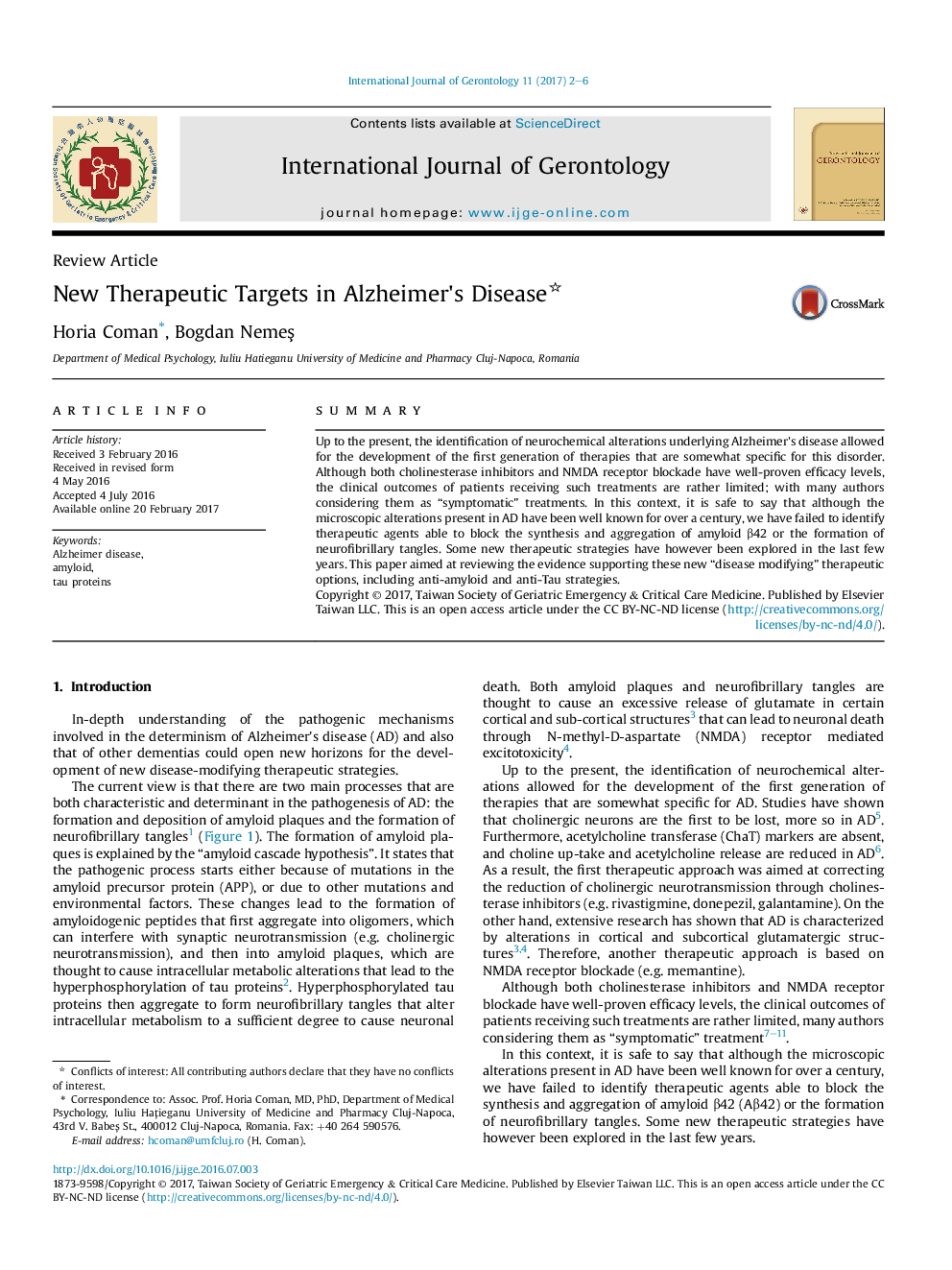| Article ID | Journal | Published Year | Pages | File Type |
|---|---|---|---|---|
| 5662728 | International Journal of Gerontology | 2017 | 5 Pages |
SummaryUp to the present, the identification of neurochemical alterations underlying Alzheimer's disease allowed for the development of the first generation of therapies that are somewhat specific for this disorder. Although both cholinesterase inhibitors and NMDA receptor blockade have well-proven efficacy levels, the clinical outcomes of patients receiving such treatments are rather limited; with many authors considering them as “symptomatic” treatments. In this context, it is safe to say that although the microscopic alterations present in AD have been well known for over a century, we have failed to identify therapeutic agents able to block the synthesis and aggregation of amyloid β42 or the formation of neurofibrillary tangles. Some new therapeutic strategies have however been explored in the last few years. This paper aimed at reviewing the evidence supporting these new “disease modifying” therapeutic options, including anti-amyloid and anti-Tau strategies.
